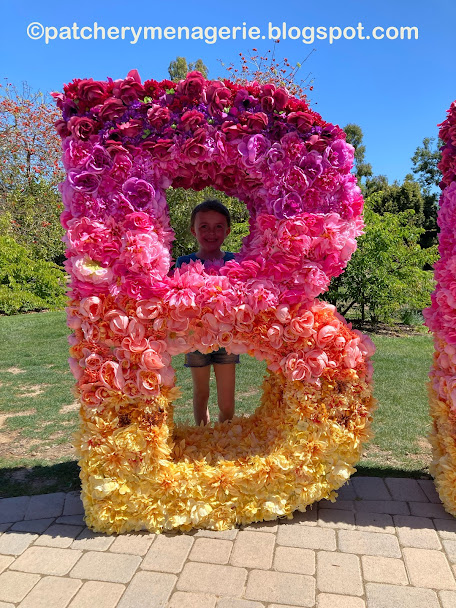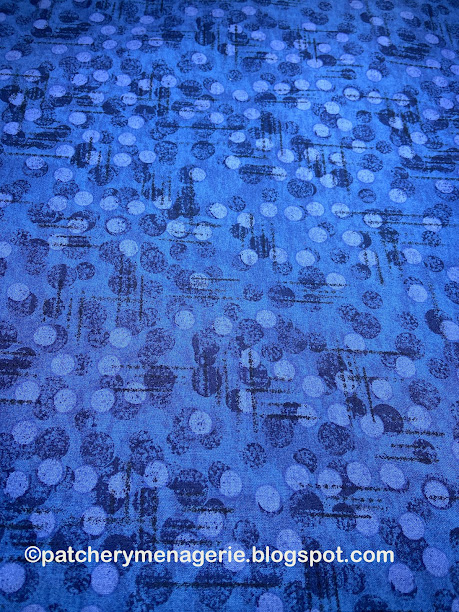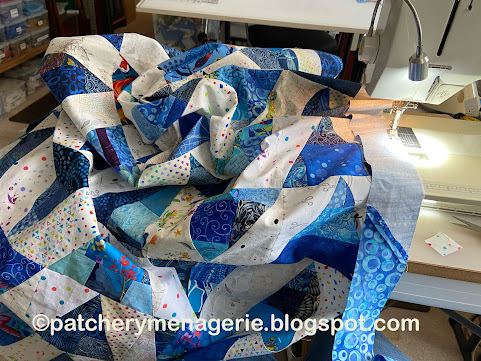While I haven't got a specific retirement date in mind yet, it's coming. I've spent the last few months training Ben, a lovely young man, who will be taking over for me. I've pretty much taught him everything. Now I get to watch while he does the work.
We all work in our own way, and there's nothing wrong with that. Except.
In my very first job when I was sixteen, I worked in an office, and my job that summer was to be the backup for when all the gals in the office went on vacation. So I got to do a lot of different things. One day I had to stuff envelopes. But there were like 10 different piles of things to go in each one.
Maggie McConnell asked me "How do you work?" I remember looking at her, not understanding what she was asking.
"I'm left-handed," she said, "So I work different than right-handed people. Do you work left to right or right to left? Arrange your work in a way that works best for you, in a way that makes sense and doesn't waste energy or effort. Try it one way, and if it doesn't work, rearrange it to suit you. There is no right or wrong way. It's whatever works best for you."
It turned out to be the single most important piece of advice I have ever received. When I do retire, it will have been after working over 50 years, and I have used Maggie's advice in every job I have ever had.
After stuffing a couple of envelopes, I moved everything around. I put the envelopes on my left. and I arranged them so when I reached for one, my fingers slipped into the envelope itself - I had folded the flaps UP so they were out of the way. I could reach for the envelope, and open it with my left hand, ready to receive the pile of stuff I had gathered with my right hand. Passing the envelope to my right hand, I tapped the bottom edge of the envelope on the desk, to seat all the items in it to the bottom. I moved the stuffed envelope to the right side of my desk, and then from the right, with my right hand, I gathered the items that had to go in the envelope one at a time. (Yes, I had to stop and fold everything FIRST), and then when the stack was ready, I reached over with my left hand for the envelope, filled it, and began again.
It is, of course, harder to explain than to do.
Maggie's advice also helps me when I teach, because I now WATCH what students are doing.
I am teaching Ben to enter Cash Receipts. Each day we get a list of customer payments that have been made to our bank via ACH. We match the items on that list with the remittance sheets the customers send us indicating how we should apply the funds - which invoices they want paid. We must locate the customer ID number before we can enter the transaction in the system. No problem there.
After each transaction, Ben makes a check mark next to that item on the bank's list. Ben is right handed. The page he is working from is on his left. The keyboard is directly in front of him. His pen is to the left, sitting on top of the list. After each transaction, Ben reaches for the pen, uncaps it, makes a mark on the page on the left, recaps the pen and then sets it down. Then he shifts the pages with the data, moving the pen (because it was in the way), and continues to the next transaction.
Can you see where this is going? If not, read the previous paragraph again.
Here is what he did. After the entry, Ben reaches across his body to the left side of his work area, picks up the pen, uncaps the pen, makes the mark, recaps the pen, sets it down, shifts the pages, and moves the pen.
Every.
Single.
Entry.
It drove me nuts for the first week, and when he didn't notice it, I finally pointed it out to him. He said, "Gee you're right, I don't need the cap on the pen."
The next day I gave him a mechanical pencil.
(One thing at a time.)
When I was drawing I would draw for two to two and a half hours each evening. I liked my pencils super sharp, and hated stopping to sharpen them. I didn't take me long to figure out that I went through a box (a dozen) pencils for each drawing, so I would buy a dozen of my favorite pencils before I began a drawing. I love HB pencils. I'd use H (Hard), HB (Hard Black) and B (Black) pencils. Occasionally I would use a soft 2B (Black, Black)*** pencil, but not often. I would go through a dozen H and HB pencils for each drawing, but the H and 2B, not so much. I kept about four to six of each of them sharp compared to the dozen each of the others. By the way, drawing pencils back then (35 + years ago) sold for about a dollar apiece. Some folks told me that was a huge extravagance.
Well if you've got 36 pencils in a pile near your worktable, you need to be able to tell them apart. By that time I had already developed arthritis in my thumb and I used those triangular pencil gizmos that made the pencil easier to hold by making the grip bigger. (See photo above.) So I color coded them. H pencils had blue grips, HB had red ones. The B pencil had aqua grips and the 2B pencils had purple grips.
But that was just part of it. I also had an electric pencil sharpener. (Remember, arthritis). And since after running the pencils through the pencil sharpener, the tips would get covered in loose graphite, which could make my drawing dirty, I kept a piece of chamois cloth nearby.
But still.
I figured it out quickly enough ("how do you work?") I kept the pencils on a taboret to the right of my drawing table (I am right handed.) I put the SHARP pencils pointing DOWN. When a pencil I was using got too dull, I would set it back on the taboret pointing UP. Easy to tell at a glance which ones were sharp and which weren't. Easy for me to reach over and grab the pencil I wanted and continue to draw without breaking my concentration. I did not have to shift the pencil in any way. Reach over, pick it up, resume drawing.
By the way, it was by drawing 8 - 10 hours a week that I figured out how many pencils I was likely to go through in one session. I didn't need 24 HB pencils, 12 was sufficient.
At the end of each drawing session, I would set my drawing aside, on an easel, so I could look at it as I walked by the studio (and to keep my cat Gizzy from lying on it. I worked under a strong light, which was also a warm spot. I'd keep a hand towel clamped to the upper left edge of my drawing table. Gizzy liked to nap there when I was drawing. The hand towel was warm and easy to remove to wash when it got too covered with his furs, and it also kept him from sliding down the slippery, angled table, but he'd lie anywhere on that table if I let him and paper is warm, so I moved my drawing.) I would sharpen each of the pencils that were pointing UP, rub the tips across the chamois to remove the excess graphite and position them so they (now nice and sharp,) pointed DOWN.
Incidentally, when my son was in grade school, we set up a smaller drafting table to my left, with a chair a light for my son. Each evening I would go into the studio to draw, and he would sit beside me and do his homework. We spent many happy hours working side by side, and he'd often ask me if I was going to draw that night (as opposed to having to go out to teach) so he'd wait to do his homework when I sat down to draw.
To this day, I still have the pencil grips on my pencils, and even in the tiny portable drawing tin at the left, they are organized this way.
Even in a cup, it is still easy to know which is which.
And this ought to explain why for me happiness is 20 pre-wound bobbins.
So my question to you is, How do YOU work?
*** By the way the Hardness Code of pencils works like this. H = Hard, B = Black. HB = Hard Black. A Number 2 pencil is about like an H. The more letters, the harder or softer a pencil. A 4H was 4 times as Hard as an H. A 2H was twice as hard as an H. Way back before CAD (Computer Aided Design) design engineers used 4H pencils because they could get an extremely fine, sharp line with one. (A disadvantage to the very Hard pencils is that they can also incise a depression in a soft piece of drawing paper. You might be able to erase the mark, but you could not remove the depression.) Conversely the more B's a pencil was, the softer and Black-er it was. 2B was soft, but a 4B was MUCH softer and a 6B was Blacker, and softer still. And of course, the softer the pencil, the more quickly it got dull.













































